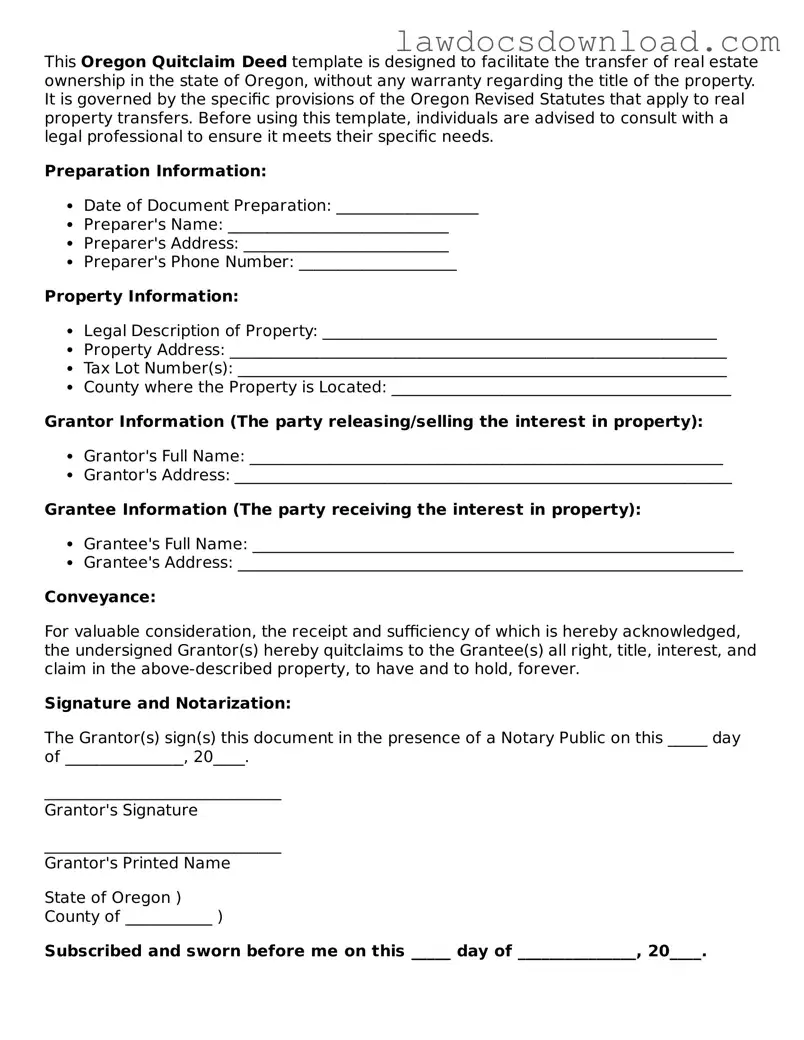This Oregon Quitclaim Deed template is designed to facilitate the transfer of real estate ownership in the state of Oregon, without any warranty regarding the title of the property. It is governed by the specific provisions of the Oregon Revised Statutes that apply to real property transfers. Before using this template, individuals are advised to consult with a legal professional to ensure it meets their specific needs.
Preparation Information:
- Date of Document Preparation: __________________
- Preparer's Name: ____________________________
- Preparer's Address: __________________________
- Preparer's Phone Number: ____________________
Property Information:
- Legal Description of Property: __________________________________________________
- Property Address: _______________________________________________________________
- Tax Lot Number(s): ______________________________________________________________
- County where the Property is Located: ___________________________________________
Grantor Information (The party releasing/selling the interest in property):
- Grantor's Full Name: ____________________________________________________________
- Grantor's Address: _______________________________________________________________
Grantee Information (The party receiving the interest in property):
- Grantee's Full Name: _____________________________________________________________
- Grantee's Address: ________________________________________________________________
Conveyance:
For valuable consideration, the receipt and sufficiency of which is hereby acknowledged, the undersigned Grantor(s) hereby quitclaims to the Grantee(s) all right, title, interest, and claim in the above-described property, to have and to hold, forever.
Signature and Notarization:
The Grantor(s) sign(s) this document in the presence of a Notary Public on this _____ day of _______________, 20____.
______________________________
Grantor's Signature
______________________________
Grantor's Printed Name
State of Oregon )
County of ___________ )
Subscribed and sworn before me on this _____ day of _______________, 20____.
________________________________
Notary Public
My Commission Expires: ___________
